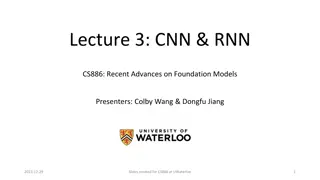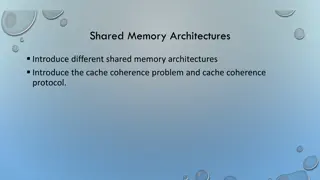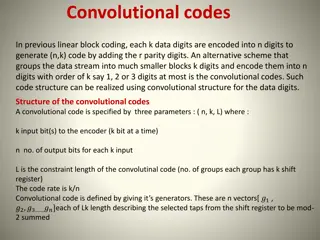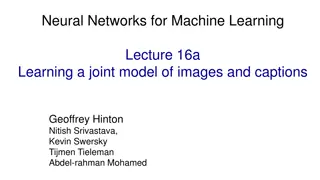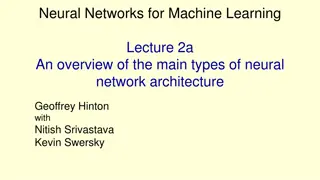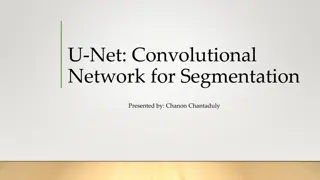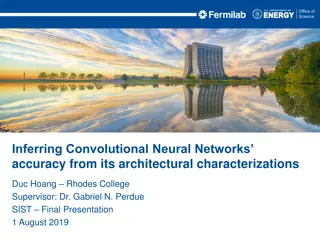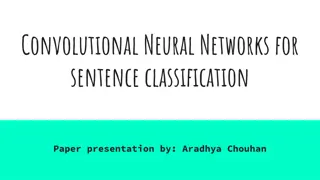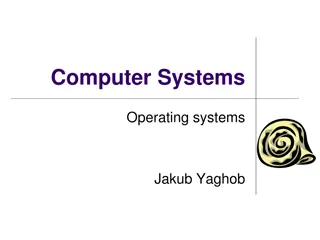Unveiling Convolutional Neural Network Architectures
Delve into the evolution of Convolutional Neural Network (ConvNet) architectures, exploring the concept of "Deeper is better" through challenges, winner accuracies, and the progression from simpler to more complex designs like VGG patterns and residual connections. Discover the significance of layer depths, challenges faced in training such networks, and the potential solutions for optimizing performance.
Download Presentation

Please find below an Image/Link to download the presentation.
The content on the website is provided AS IS for your information and personal use only. It may not be sold, licensed, or shared on other websites without obtaining consent from the author.If you encounter any issues during the download, it is possible that the publisher has removed the file from their server.
You are allowed to download the files provided on this website for personal or commercial use, subject to the condition that they are used lawfully. All files are the property of their respective owners.
The content on the website is provided AS IS for your information and personal use only. It may not be sold, licensed, or shared on other websites without obtaining consent from the author.
E N D
Presentation Transcript
Exploring convnet architectures
Deeper is better Challenge winner's accuracy 30 25 7 layers 20 16 15 layers 10 5 0 2010 2011 2012 2013 2014
Deeper is better Challenge winner's accuracy 30 25 Alexnet 20 15 VGG16 10 5 0 2010 2011 2012 2013 2014
The VGG pattern Every convolution is 3x3, padded by 1 Every convolution followed by ReLU ConvNet is divided into stages Layers within a stage: no subsampling Subsampling by 2 at the end of each stage Layers within stage have same number of channels Every subsampling double the number of channels
Example network 5 5 10 10 20 20
Deeper is better Challenge winner's accuracy 30 25 Alexnet 20 Can we go deeper? 15 VGG16 10 5 0 2010 2011 2012 2013 2014
Challenges in training: exploding / vanishing gradients Vanishing / exploding gradients If each term is (much) greater than 1 explosion of gradients If each term is (much) less than 1 vanishing gradients
Challenges in training: noisy gradients Vanishing / exploding gradients Gradient for i-th layer depends on all subsequent layers But subsequent layers are initially random Implies noisy gradients for earlier layers
Residual connections Instead of: We will have:
With and without residual connections Without residual connections With residual connections Noisy
Residual block Conv + ReLU Conv+ReLU
Residual connections Assumes all zi have the same size True within a stage Across stages? Doubling of feature channels Subsampling Increase channels by 1x1 convolution Decrease spatial resolution by subsampling
The ResNet pattern Decrease resolution substantially in first layer Reduces memory consumption due to intermediate outputs Divide into stages maintain resolution, channels in each stage halve resolution, double channels between stages Divide each stage into residual blocks At the end, compute average value of each channel to feed linear classifier
Putting it all together - Residual networks Challenge winner's accuracy 30 200 25 150 20 15 100 10 50 5 0 0 2010 2011 2012 2013 2014 2015
Transfer learning with convolutional networks Linear classifier Horse Trained feature extractor
Transfer learning with convolutional networks What do we do for a new image classification problem? Key idea: Freeze parameters in feature extractor Retrain classifier Linear classifier Trained feature extractor
Transfer learning with convolutional networks Dataset Best Non- Convnet perf Pretrained convnet + classifier Improvement Caltech 101 84.3 87.7 +3.4 VOC 2007 61.7 79.7 +18 CUB 200 18.8 61.0 +42.2 Aircraft 61.0 45.0 -16 Cars 59.2 36.5 -22.7
Why transfer learning? Availability of training data Computational cost Ability to pre-compute feature vectors and use for multiple tasks Con: NO end-to-end learning
Finetuning Horse
Finetuning Bakery Initialize with pre- trained, then train with low learning rate
Finetuning Dataset Best Non- Convnet perf Pretrained convnet + classifier Finetuned convnet Improvem ent Caltech 101 84.3 87.7 88.4 +4.1 VOC 2007 61.7 79.7 82.4 +20.7 CUB 200 18.8 61.0 70.4 +51.6 Aircraft 61.0 45.0 74.1 +13.1 Cars 59.2 36.5 79.8 +20.6



